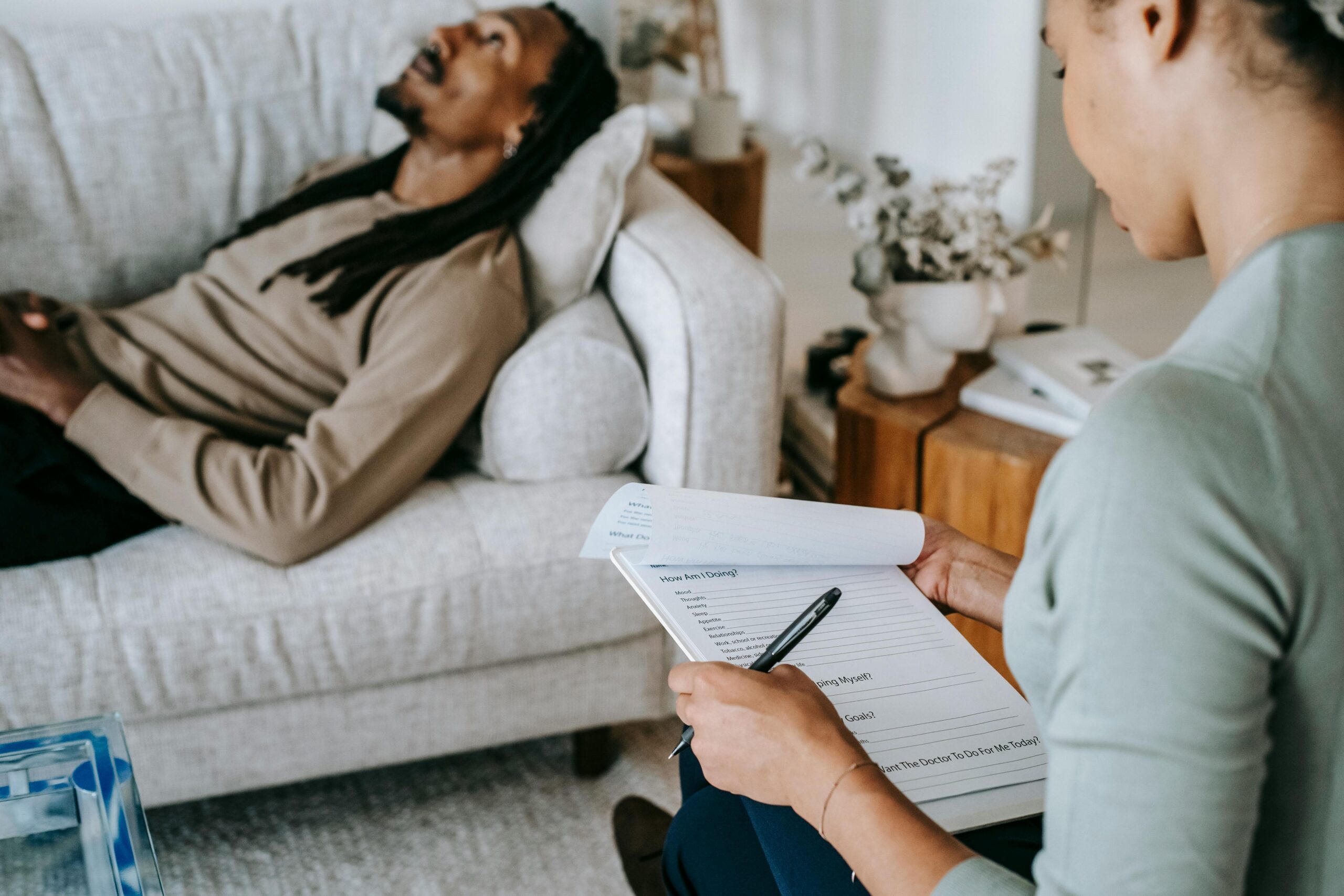
Hypnotherapy is an increasingly popular therapeutic tool for addressing a variety of issues, from stress and anxiety to habits like smoking and overeating. Many people have heard of hypnosis, but few understand what actually happens during a hypnotherapy session. In this article, we will break down the process of a typical hypnotherapy session, explain how hypnosis works, and share tips on how to get the best effects from hypnotherapy. If you’ve ever been curious about hypnotherapy or are considering trying it for yourself, read on to learn what to expect and how it could help you.
How Does Hypnosis Work?
Before we dive into what happens during a hypnotherapy session, it’s important to understand the basics of how hypnosis works. Hypnosis is a natural state of focused concentration and deep relaxation. It involves guiding a person into a trance-like state, where the conscious mind is relaxed, and the subconscious mind becomes more open to suggestions. In this heightened state of awareness, the individual is more receptive to change, and the therapist can help address a variety of mental, emotional, and behavioral challenges.

The Science Behind Hypnosis
Hypnosis has been extensively studied, and research has shown that it can produce measurable changes in brain activity. When in a state of hypnosis, the brain enters a highly focused state, where the conscious mind quiets down, and the subconscious becomes more active. The therapist can then make suggestions that influence thoughts, feelings, and behaviors.
Hypnotherapy is not about mind control or “making you do something against your will.” It is, instead, about using the power of your subconscious mind to bring about positive change. This can be especially helpful in overcoming issues such as anxiety, stress, phobias, pain, and unhealthy habits.
What Happens During a Hypnotherapy Session?
Now that we have an understanding of how hypnosis works, let’s explore what actually happens during a typical hypnotherapy session.
The First Consultation
Most hypnotherapy sessions begin with an initial consultation. This is a crucial step in building a rapport with the therapist and ensuring that the therapy is tailored to your specific needs. During this consultation, the therapist will ask questions about your background, goals, and the issues you would like to address. This may include questions about your health, past experiences, or any current challenges you are facing. This conversation helps the therapist understand your situation and determine the most effective approach for your session.
For those opting for hypnotherapy online, the consultation will typically take place via video call. Online hypnotherapy has become increasingly popular, offering convenience and accessibility, while still providing the same therapeutic benefits as in-person sessions.
Induction: Entering a Relaxed State
Once the consultation is complete and you’re ready to begin, the therapist will guide you into a state of relaxation, known as the “induction” phase. This is the first step in the hypnotherapy process. During this phase, the therapist will use calming language and techniques designed to help you let go of distractions and enter a deeply relaxed state.
Some common techniques used during the induction phase include:
- Progressive Relaxation: This involves slowly relaxing different areas of the body, starting from the feet and moving upward, until the entire body is relaxed.
- Breathing Techniques: Deep, slow breathing can help reduce stress and calm the mind, making it easier to enter a hypnotic state.
- Visualization: The therapist may guide you to imagine a peaceful or calming environment, such as a beach or a forest, which helps deepen the relaxation.
As you relax, your conscious mind becomes quieter, allowing the therapist to guide you into a trance-like state, also known as “hypnosis.”
Deepening: Enhancing the Relaxed State
Once you’ve entered a relaxed state, the therapist will work to deepen the hypnosis. This phase is referred to as “deepening” and involves taking you to an even more relaxed level of awareness. This is where the therapeutic work begins to take effect. The deeper you go into hypnosis, the more receptive your subconscious mind becomes to suggestions.
The therapist might use various techniques to deepen the hypnosis such as:
- Counting Down: The therapist might count down from 10 to 1, with each number representing a further deepening of your relaxation.
- Visualization Techniques: The therapist may guide you to imagine sinking into a comfortable chair, descending a staircase, or floating down into a peaceful environment, which enhances your sense of calm and focus.
Progressive Relaxation: The therapist might continue to guide you through more body relaxation exercises, helping you feel increasingly at ease.
Suggestion Phase: Creating Positive Change
At this point in the session, you are deeply relaxed and highly focused. Your subconscious mind is more accessible, and the therapist can begin making suggestions that will help address the issues you’ve identified. This phase is where the true therapeutic benefits of hypnotherapy are realized.
For example, if you’re seeking help with anxiety, the therapist might suggest that you feel calm, confident, and in control in stressful situations. If you’re trying to quit smoking, the therapist might suggest that you no longer crave cigarettes and that you feel healthier and more energetic without them.
The suggestions can be specific to your situation, and the therapist may use positive affirmations or visualization exercises to reinforce the new, healthier mindset. In some cases, the therapist might also use techniques like regression, where you revisit past experiences or memories to reframe them in a more positive light.
Post-Hypnosis: Gently Returning to Full Awareness
Once the suggestions have been made, the therapist will begin the process of bringing you back to full awareness. This phase is called “awakening,” and it involves gradually guiding you out of the hypnotic state and back into normal consciousness.
This process is gentle and gradual. The therapist might count up from 1 to 5, with each number bringing you back to full awareness. As you come out of the relaxed state, you will likely feel calm, refreshed, and energized. Many people report feeling more focused, clear-headed, and at peace after a hypnotherapy session.
After the Session: What to Expect
After your session, you may experience a variety of feelings. Some people feel incredibly relaxed and calm, while others may feel energized or even a little emotional. This is normal, and your feelings may change as the effects of the session settle in over the next few hours or days.
It’s important to note that hypnotherapy is not a one-time fix. While some people experience significant changes after just one session, others may require several sessions to achieve lasting results. Your therapist will work with you to determine the number of sessions you need and will continue to monitor your progress over time.

How to Get the Best Effect from a Hypnotherapy Session
If you want to get the most out of your hypnotherapy session, there are a few things you can do to prepare. Here are some tips to help ensure the best possible outcome:
1. Be Open to the Process
Hypnotherapy works best when you are open to the process. Trust the therapist and allow yourself to fully engage in the experience. The more relaxed and open you are, the more effective the session will be.
2. Set Clear Goals
Before your session, take some time to think about what you want to achieve. Whether it’s reducing stress, quitting smoking, or overcoming a specific fear, having a clear goal in mind will help you and your therapist focus on the specific issue at hand.
3. Find a Qualified Hypnotherapist
Whether you’re opting for in-person hypnotherapy or online hypnotherapy, it’s essential to choose a qualified and experienced therapist. Look for someone who is certified in hypnotherapy and has experience helping clients with the issue you want to address.
4. Practice Relaxation Techniques at Home
If you’re new to hypnosis, practicing relaxation techniques at home can help you become more comfortable with the process. Deep breathing, progressive muscle relaxation, and guided meditation are all great ways to prepare your mind and body for hypnotherapy.
5. Be Patient
Hypnotherapy can be a powerful tool for change, but it’s important to be patient with yourself. Change takes time, and while you may notice immediate effects, it’s the cumulative impact of several sessions that often leads to lasting transformation.
Conclusion: Unlocking the Power of Your Subconscious Mind
A hypnotherapy session is an opportunity to explore the power of your subconscious mind and make lasting changes in your thoughts, behaviors, and emotions. Whether you are seeking help with stress, habits, or deep-rooted issues, hypnotherapy can offer a safe and effective way to create positive change in your life. By understanding what happens during a hypnotherapy session and preparing yourself for the process, you can maximize the benefits of this powerful therapeutic tool. Whether in person or online, hypnotherapy can help unlock your mind’s full potential for healing and growth.

